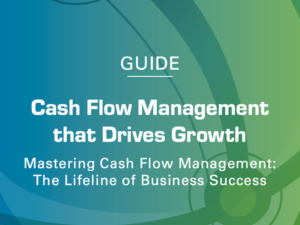Help Staffers Boost Retirement Savings With a Roth 403(b) Plan
Kirsch CPA Group
Mar 12, 2024

For-profit businesses with 401(k) retirement plans can offer Roth 401(k) plans to their employees. Likewise, not-for-profits can add a Roth feature. Roth 403(b) plans reward participants with tax benefits when they withdraw funds (as opposed to when they contribute funds), which may appeal to some of your staffers. If you already offer a 403(b) plan, enabling a Roth component is generally fairly easy. Let’s take a look.
Contribution Opportunities
A standard 403(b) plan is a type of qualified retirement plan that can be set up for employees of not-for-profit organizations. As with other qualified plans, tax-free contributions to 403(b) plans compound and grow without accruing tax until withdrawals are made. Money in a 403(b) plan generally can be invested in a variety of options, including stocks, bonds and mutual funds.
Participants are allowed to contribute a maximum amount of $23,000 to a 403(b) plan in 2024. If they’re age 50 or older, your staffers can kick in an extra $7,500 “catch-up contribution,” for a grand total of $30,500 in 2024. These are the same maximums 401(k) plan participants enjoy. (Enhancements for certain 403(b) plan participants in their early sixties will become available starting in 2025.)
To further sweeten the pot, an employee who has worked for a qualified not-for-profit for at least 15 years can contribute an additional $3,000 a year for five years — up to a lifetime total of $15,000 — if they’ve previously averaged contributions of less than $5,000 per year. This tax break, which goes above and beyond the regular catch-up contribution, is exclusive to 403(b) plans.
Finally, nonprofits can match worker contributions based on a percentage of their compensation. Including matching funds, the overall limit for contributions to a 403(b) plan in 2024 is the lesser of $69,000 or 100% of the participant’s compensation.
403(b) Plan Distributions
As with standard 401(k) plans, standard 403(b) plan distributions are taxed as ordinary income (with rates currently as high as 37%), generally when participants are retired. Fortunately, nonprofit employees usually are in a lower tax bracket during retirement than they were during their working years. Most early (prior to age 59½) withdrawals from a 403(b) plan are charged a 10% penalty on top of ordinary income tax.
Also, 403(b) plan accountholders must begin taking required minimum distributions (RMDs) at age 73, just like 401(k) participants. The SECURE 2.0 law raised the age threshold from age 72 to age 73, beginning in 2023. How much an individual must withdraw in annual RMDs depends on life expectancy tables and the balance of the plan participant’s account on December 31 of the previous year.
Plan participants who fail to take RMDs when required are subject to tax penalties, in addition to regular income tax. However, SECURE 2.0 lowered this penalty from a hefty 50% of the tax liability to 25% — and to only 10% if the RMD error is corrected in a timely fashion.
The Roth Option
Like Roth 401(k) plans, Roth 403(b) plans offer significant tax rewards on the back end. Contributions to a Roth 403(b) plan are made with after-tax funds. But participants can still benefit from tax-deferred growth within their account as contributions and earnings compound over time.
As with standard 403(b) plans, Roth 403(b) plan contributors can make:
- Standard contributions (up to $23,000 in 2024),
- 15-year catch-up contributions, if eligible ($3,000 annually), and
- Regular catch-up contributions, if age 50 or older ($7,500 in 2024).
In addition, SECURE 2.0 made it possible for employers to provide matching contributions to participants’ Roth 403(b) plan accounts. Previously, Roth accounts weren’t eligible to receive matching funds.
As with all Roth-type plans, qualified distributions made from Roth 403(b) plans are exempt from tax if an account has existed for five or more years. Plan participants also generally must be age 59½ or older. The standard exceptions to the early withdrawal penalty remain in effect. Nonqualified distributions are taxed, but typically under the IRS’s favorable “ordering rules.” This refers to the source of the contributions (for example, rollovers and conversions) and can result in little actual tax liability.
More SECURE 2.0 Changes
Traditionally, RMDs applied to Roth 401(k) and Roth 403(b) plans, even though Roth IRAs were exempt from RMDs. However, SECURE 2.0 eliminated RMDs for these accounts, beginning in 2024. So staffers who establish Roth 403(b) plans can keep their Roth money invested as long as they choose.
SECURE 2.0 added another consideration for nonprofits that offer 403(b) plans. Under the new law, catch-up contributions to a 403(b) plan must be made to a Roth 403(b) if the participant earns $145,000 or more. This provision initially was scheduled to take effect in 2024. However, to allow plan administrators more time to implement the rule, the IRS has granted a two-year reprieve. The requirement now applies to catch-up contributions made to 403(b) plans in 2026 and thereafter. If this rule is likely to affect your organization, start planning now.
Look at Your Situation
Depending on your nonprofit’s situation, you may be able to add a Roth option to your existing 403(b) plan — or switch to a Roth 403(b) plan completely. But be sure to work with Kirsch CPA Group and knowledgeable employee benefits professionals to implement this option.
Schedule an appointment to learn how we can support you
© Copyright 2024. All rights reserved.
More Resources

About The Author
Kirsch CPA Group is a full service CPA and business advisory firm helping businesses and organizations with accounting,…





